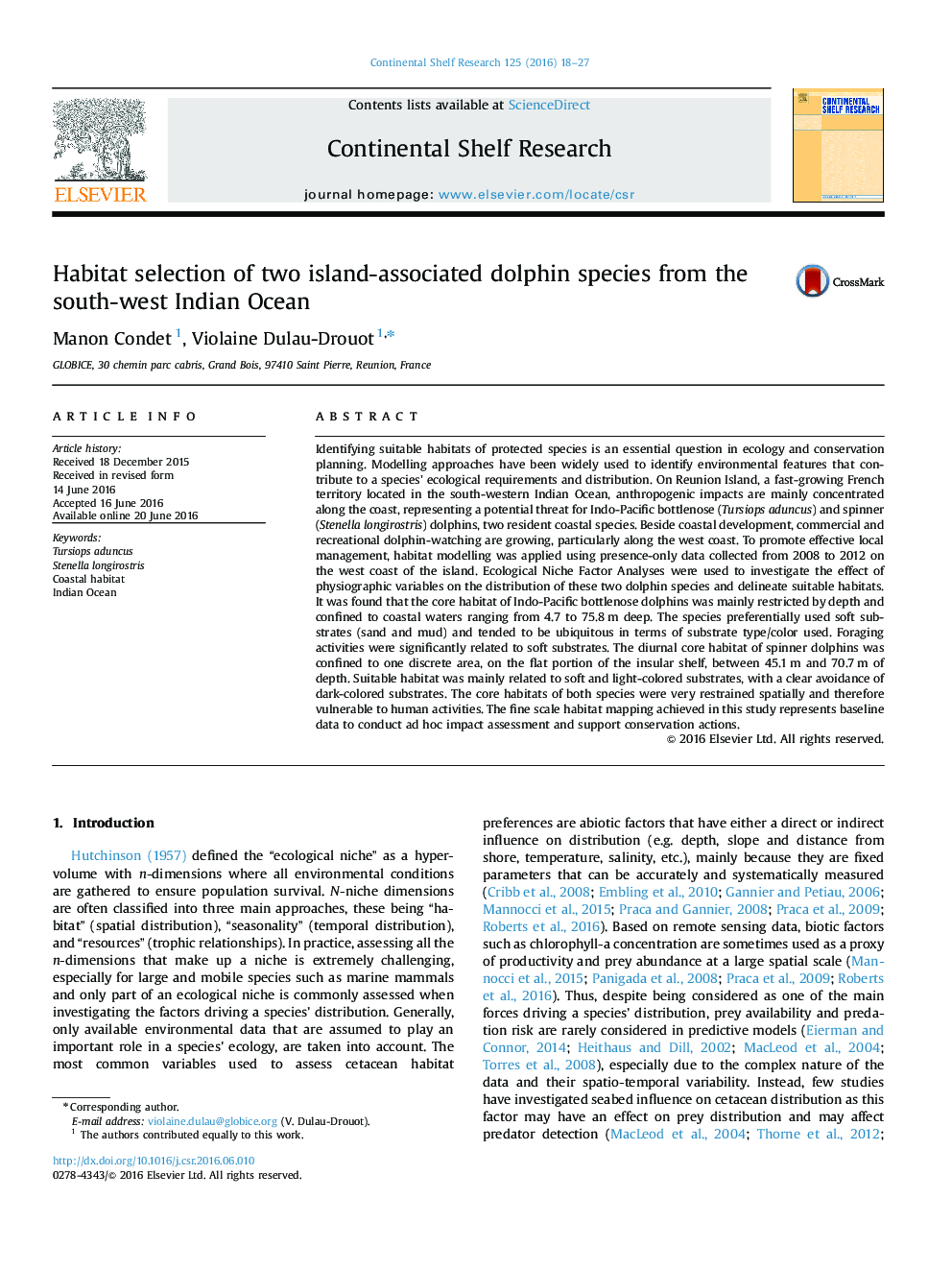| کد مقاله | کد نشریه | سال انتشار | مقاله انگلیسی | نسخه تمام متن |
|---|---|---|---|---|
| 4531572 | 1626088 | 2016 | 10 صفحه PDF | دانلود رایگان |
• Habitat modelling (ENFA) of Indo-Pacific bottlenose and spinner dolphin.
• Study Area: insular shelf of the west coast of Reunion Island (2008–2012).
• Seabed color and substrate type play an important role in habitat selection of coastal dolphins.
• The two species used restricted and distinct core habitats, leading to different conservation implications.
Identifying suitable habitats of protected species is an essential question in ecology and conservation planning. Modelling approaches have been widely used to identify environmental features that contribute to a species' ecological requirements and distribution. On Reunion Island, a fast-growing French territory located in the south-western Indian Ocean, anthropogenic impacts are mainly concentrated along the coast, representing a potential threat for Indo-Pacific bottlenose (Tursiops aduncus) and spinner (Stenella longirostris) dolphins, two resident coastal species. Beside coastal development, commercial and recreational dolphin-watching are growing, particularly along the west coast. To promote effective local management, habitat modelling was applied using presence-only data collected from 2008 to 2012 on the west coast of the island. Ecological Niche Factor Analyses were used to investigate the effect of physiographic variables on the distribution of these two dolphin species and delineate suitable habitats. It was found that the core habitat of Indo-Pacific bottlenose dolphins was mainly restricted by depth and confined to coastal waters ranging from 4.7 to 75.8 m deep. The species preferentially used soft substrates (sand and mud) and tended to be ubiquitous in terms of substrate type/color used. Foraging activities were significantly related to soft substrates. The diurnal core habitat of spinner dolphins was confined to one discrete area, on the flat portion of the insular shelf, between 45.1 m and 70.7 m of depth. Suitable habitat was mainly related to soft and light-colored substrates, with a clear avoidance of dark-colored substrates. The core habitats of both species were very restrained spatially and therefore vulnerable to human activities. The fine scale habitat mapping achieved in this study represents baseline data to conduct ad hoc impact assessment and support conservation actions.
Journal: Continental Shelf Research - Volume 125, 15 August 2016, Pages 18–27
